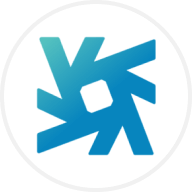Lambda is a blockchain infrastructure project renowned for its exceptional speed, robust security, and remarkable scalability. It revolutionizes decentralized applications (DApps) by providing unparalleled data storage capabilities. This is made possible by separating the Lambda Chain and Lambda DB.
The project's extensive range of services includes multi-chain data storage, cross-chain data management, data privacy, data ownership validation, and distributed intelligent computing facilitation. Together, these services form a comprehensive framework that empowers developers and users in the decentralized ecosystem.
What is Lambda?
Lambda is a blockchain protocol that utilizes its infrastructure and smart contract capabilities to enable secure and efficient transactions. At the heart of the Lambda ecosystem is its native crypto token, LAMB.
LAMB serves as a medium of exchange and a store of value, empowering users to engage in various activities within the Lambda network. This includes the DApps, creating smart contracts, and participating in other blockchain-centric interactions.
The Lambda team
A trio of experienced professionals leads the Lambda network. Alessandro Asoni, a software engineer, brings his expertise to the team. Kyle McGill, a senior software engineer, specializes in developing scalable data pipelines, automation tools, and API frameworks for machine learning model applications. Additionally, Tyler Cloutier serves as a co-founder of the Lambda network.
How does Lambda work?
Lambda operates using the Proof of Space Time (PoST) consensus mechanism. The protocol functions as both a storage provider and a verifier. Through PoST, the storage provider informs the verifier that a specific file has been stored for a specific duration.
The storage provider assumes the responsibility of generating valid Proofs of Storage, and upon successful completion, they are rewarded for their data storage efforts. Validators play a crucial role in ensuring the integrity and security of the stored data, contributing to the overall robustness of the Lambda network.
Lambda’s native token: LAMB
LAMB plays a significant role within the Lambda ecosystem, primarily for mining activities and storage space trading. Service providers on the Lambda blockchain are rewarded with LAMB tokens for successfully completing tasks and contributing to the network.
LAMB tokenomics
The LAMB token has a maximum supply of 10 billion tokens. There is a total supply of 6 billion LAMB tokens, with approximately 1.6 billion tokens in circulation.
LAMB use cases
The Lambda blockchain offers several enhanced features for Ethereum developers, bringing significant advancements to the ecosystem. These features include a fast-finality Proof of Stake (PoS) consensus mechanism, dependable testnet clients, built-in interoperability with other chains, and a bridge network enabling seamless interaction with the Ethereum mainnet. These capabilities lead to operational improvements and foster innovation within the ecosystem. Additionally, the Lambda blockchain facilitates the creation of robust and interoperable decentralized applications.
Distribution of LAMB
The distribution of LAMB is as follows:
- Forty percent is allocated as mining rewards.
- Twenty-five percent was sold during Lambda’s private sale.
- Five percent will be offered through a public sale.
- Ten percent is held by the team.
- Twenty percent is allocated to the foundation.
What does the future hold for Lambda?
The future of the Lambda network relies on its core development team, known for constructing a secure and cost-effective decentralized storage network that has garnered significant community support.
With the increasing prominence of decentralized finance (DeFi) and non-fungible tokens (NFTs), Lambda will evolve to cater to the evolving demands of these applications. The Lambda network has plans to introduce "The Renaissance," a new Web3 infrastructure that integrates DeFi and NFT technologies.
The Renaissance aims to tackle the challenges associated with data availability and transactional value. This will be achieved by establishing a decentralized value data transaction system on an efficient blockchain while providing unrestricted and highly accessible storage capabilities.





















Socials